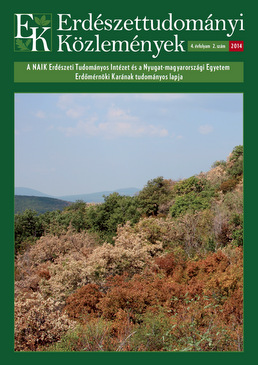Investigation of rooting zone of forest association growing under drying sandy site conditions
Imre Csiha & Zsolt Keserű
Correspondence
Correspondence: Csiha Imre
Postal address: H-4150 Püspökladány, Farkassziget 3.
e-mail: csihai[at]erti.hu
Abstract
Today the Hungarian forest-steppe oak stands are grown mainly on unfavourable sandy sites. On these areas both the precipitation distribution and the water regime are unfavourable and the groundwater is in inaccessible depth for stands. In spite of that a lot of old high quality stem can be found in the investigated forest associations according to our experience the associations’ regenerations sometimes encounter insolvable difficulties. In spite of that the rate of growth of the present stand relates to sufficient water quantity the growing of the planted seedlings and sowings is slow in the different forest regenerations. The state of health of the regrowth is bad, the stand becomes thinner and invasive weeds occupy on the area after a few years. We carried out root excavations to find out the reason of the different growth pattern between the regrowth and the original stand. On the area the investigated root systems of the three tree species – pedunculate oak (Quercus robur), white poplar (Populus alba) and common ash (Fraxinus excelsior) – show that the present old stand didn’t evolve by means of dry sandy site but it developed due to the effect of the covered meadow soil.
Keywords: root excavation, sandy site, lowland oak stands
Open Acces
For non-commercial purposes, let others distribute and copy the article, and include in a collective work, as long as they cite the author(s) and the journal, and provided they do not alter or modify the article.
Cite this article as:
Csiha, I. & Keserű, Zs. (2014): Investigation of rooting zone of forest association growing under drying sandy site conditions. Bulletin of Forestry Science, 4(2): 33-42. (in Hungarian)
Volume 4, Issue 2
Pages: 33-42
First published:
6 October 2014
Related content
17
More articles
by this authors
5
Related content in the Bulletin of Forestry Science*
More articles by this authors in the Bulletin of Forestry Science
* Automatically generated recommendations based on the occurrence of keywords given by authors in the titles and abstracts of other articles. For more detailed search please use the manual search.
